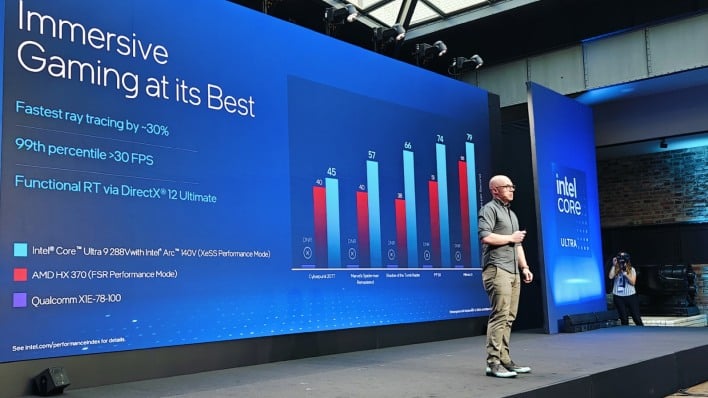Today at the IFA Berlin tech trade show, HotHardware honcho Dave Altavilla caught up with Intel’s Robert Hallock to do a quick interview concerning the company’s new Core Ultra Series 2 mobile processors. This family currently comprises the Core Ultra 200V parts, code-named Lunar Lake, a set of extremely efficient mobile SoCs meant for both thin & light laptops as well as handheld gaming machines.

Of course, because it’s 2024, we have to talk about AI performance. Hallock notes that Lunar Lake sits just ahead of Qualcomm’s NPU in terms of performance at 48 TOPS, but his main argument in favor of Intel’s parts is that Intel supports almost any data type across the three AI processors on the Lunar Lake die: the NPU, 4+4 x86-64 CPU cores, and then the Xe2 GPU with XMX units, which is actually the fastest of the three. In comparison, both AMD and Qualcomm have much more limited format support for AI workloads.
Intel’s Core Ultra 200V CPUs are officially launched today, and pre-orders are open for laptops sporting the new chips. Those machines are expected to be shipping by the third week of this month. Hallock says that we’re likely to see Lunar Lake pop up in other places, too, though, and gave the specific example of gaming handhelds. Those are a perfect fit for the 9-33W power limits of the part. We’re looking at getting our hands on a Lunar Lake machine for independent testing sooner than later, so check back before long to see what we think.
